Intel Details 10th Gen Comet Lake-H for 45 W Notebooks: Up to 5.3 GHz*
by Dr. Ian Cutress on April 2, 2020 3:01 AM EST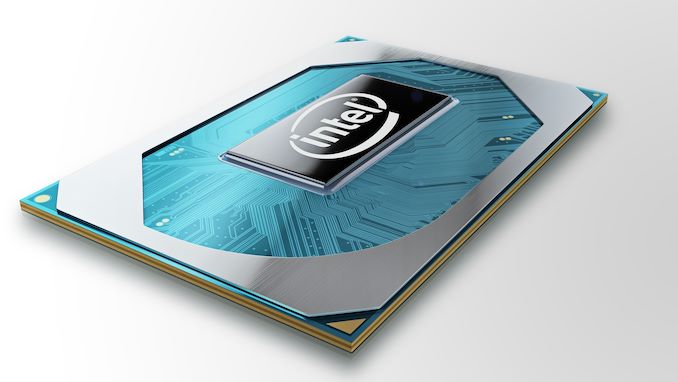
Two of the big announcements out of CES this year were both mobile related: Intel and AMD announced they would be launching new gaming laptop processors into the market in the first half of this year. 45 W parts, also known as H-series in the business, provide the basis for productivity and gaming notebooks that use additional graphics to give some oomph. These systems span from thin and light with GPU requirements, through ‘luggables’ that are just about portable, all the way up to desktop replacement designs. Intel’s newest 10th Gen H-Series are based on the Comet Lake family, the fifth iteration of Intel’s 14nm Skylake designs, and they’re going all the way up to 5.3 GHz*.
The new CPU list from Intel starts with the Core i9-10980HK at the top, with eight cores, sixteen threads, and all the focus is on that 5.3 GHz turbo frequency.
*This CPU can hit this frequency on two cores. However this has some specific requirements: the system needs to be within its secondary power limits, and Intel’s Thermal Velocity Boost also needs to be turned on. The latter of which means that there has to be additional thermal headroom in the system, and that OEMs have designed for this and enabled it within the system. This allows the CPU to go from 5.1 GHz to 5.3 GHz. Every Intel Thermal Velocity Boost enabled CPU requires specific OEM support in order to get those extra two bins on the single core frequency.
The base frequency of this chip is 2.4 GHz, and it has a regular 45 W TDP (sustained power), which can be run in cTDP up mode for 65 W. Two other plus points on this chip is that it is unlocked, for when an OEM provides more thermal headroom, and it supports DDR4-2933, which is an upgrade over the previous generation. Intel's recommended PL2 (turbo power) for the Core i9 is 135 W, and Intel says the recommended 'Tau' is set to 56 seconds for the i9, and 28 seconds for all the other CPUs. OEMs don't often adhere to these values for notebooks, but they are provided as a guide. It does mean that in order to hit 5.3 GHz, the Core i9 is by default allowed to take 135 W across two cores, or 67.5 W per core. Even at 60W per core, you're looking at 50A of current per core... in a laptop.
| Intel 10th Gen Core 45W Processors (Comet Lake-H) |
|||||||
| AnandTech | Cores Threads |
Base Freq |
Turbo Freq*1 |
Turbo Freq*2 |
DDR4 | TDP | cTDP Up |
| i9-10980HK ++ | 8 / 16 | 2.4 | 5.1 | 5.3 | 2933 | 45 W | 65 W |
| i7-10875H | 8 / 16 | 2.3 | 4.9 | 5.1 | 2933 | 45 W | - |
| i7-10850H + | 6 / 12 | 2.7 | 4.9 | 5.1 | 2933 | 45 W | - |
| i7-10750H | 6 / 12 | 2.6 | 4.8 | 5.0 | 2933 | 45 W | - |
| i5-10400H | 4 / 8 | 2.6 | 4.6 | - | 2933 | 45 W | - |
| i5-10300H | 4 / 8 | 2.5 | 4.5 | - | 2933 | 45 W | - |
| *1 Turbo Frequency for devices without Thermal Velocity Boost *2 Turbo Frequency for devices with Turbo Max 3.0 and Thermal Velocity Boost ++ Unlocked CPU + Partial Unlock |
|||||||
Intel only has a single Core i9 at the top, with the top grade i7 also getting 8 cores, but only up to 5.1 GHz and no overclocking. The Core i7-10850H is going to be the second exciting part over the i9, with six cores and a 5.1 GHz turbo, but it allows an additional 4-bin overclock on the first two cores where thermals allow. All of the CPUs here are listed as 45 W, and all support DDR4-2933 memory (up to 128 GB we believe). Due to Intel Thermal Velocity Boost, all the i7 and i9 parts are +200 MHz above what they would be without the technology, with frequencies that we are more used to seeing on the 9th Generation.
Intel states that there will be 30+ designs using the new 10th Gen Comet Lake-H that fit within the ‘thin and light’ profile of 20mm, and 100+ designs in total across consumer, commercial and workstation. Intel is keen to highlight that it is the only CPU vendor that has OEM partners that provide HDR1000 panels and 300 Hz refresh displays in this market.
Intel also made a big fuss about TB3 support, although it isn’t native here – you still require a controller. One positive for 10th Gen is that it supports two TB3 controllers, rather than previous generations that only supported one. Though again, it depends on whether the OEM puts it in their system, because it isn’t native to the CPU.
We’re not going to post Intel’s benchmarks here, because to be quite honest they are not comparable. In gaming tests, Intel compares a 10980HK equipped with a RTX 2080 Super to a 7820HK equipped with a GTX 1080. As a result, a lot of difference in the gaming performance is going to be in the GPU, but also the graphs that they showed did not start at zero – suggesting that the graph somehow doubled despite only rising 44% in a select test. We’re going to wait to see for ourselves what the hardware can do.
Intel did show a die shot of the silicon, with all of its eight cores. It looks strikingly similar to the Coffee Lake 8-core silicon, because it’s practically identical. If there are any changes, it is minor, and then the chip is binned for the voltage profile.
Meanwhile, although none of Intel’s partners were named or otherwise involved in Intel's own announcement, they have been holding separate briefings regarding their laptop plans. MSI, Lenovo, Acer, and others are all releasing 10th Gen laptops as soon as April 15th, with the rest to follow in May. Broadly speaking, expect to see many vendors update existing 9th Gen gaming systems to include 10th Generation parts, though in the case of gaming laptops we're going to see the occasional, more substantial update to take advantage of NVIDIA's new hardware and thermal capabilities.
Intel’s competition here is going to be the recently launched Ryzen Mobile 4000 processors, in devices like the ASUS Zephyrus G14 and the Dell G5 SE. These new APUs were launched on 1st April, however unfortunately we were not told of an embargo change, and still expected the launch to be another two weeks later. We’re aiming to get our review out next week. When we get access to Intel’s 10th Gen H-series, we will compare it against AMD as well.


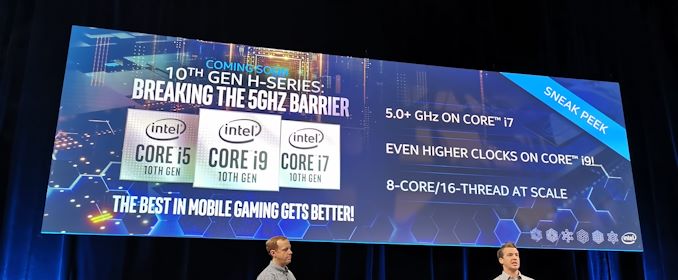
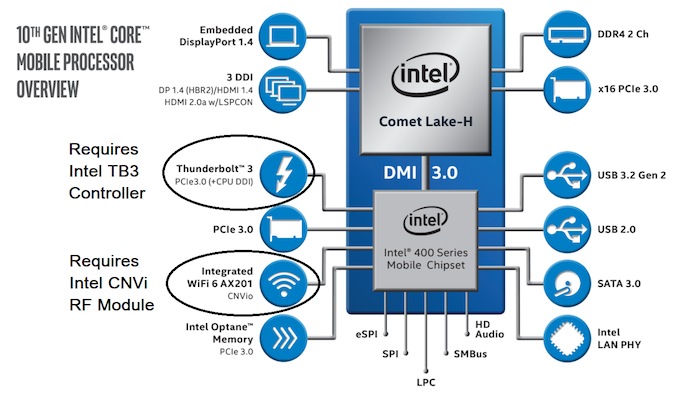
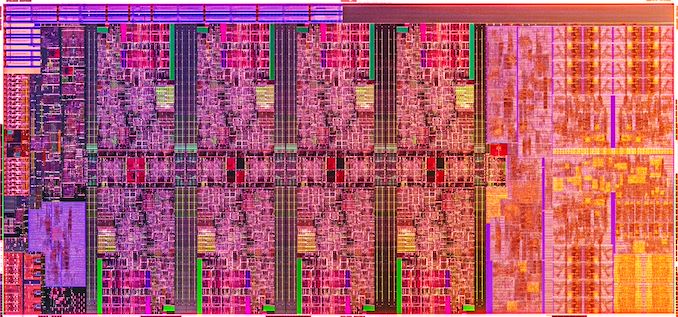
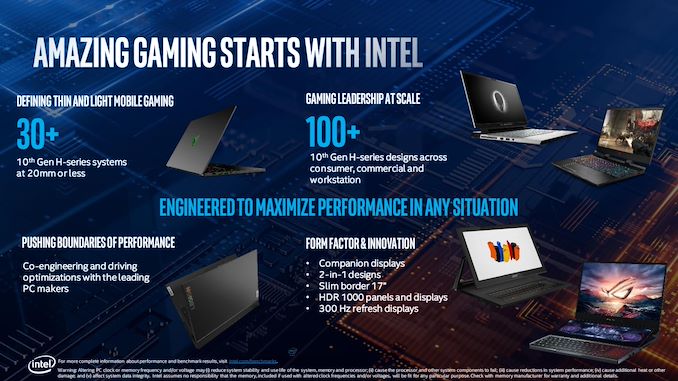








157 Comments
View All Comments
TheMighty - Thursday, April 2, 2020 - link
Yes a few hundred mghz is going to make a big difference lol. Still 14nm, still the same architecture this is going to be hot and not in a good way. A pass for me I'm buying AMD specially if you look at the prices.deil - Thursday, April 2, 2020 - link
I did not feel any reason to upgrade since i5-3210m. Its on verge of beeing to too weak but it was not compelling to change to literally ANYTHING since. I was looking into ryzenz 3X series but then I heard about 4'th and decided to wait :) a good choice.yankeeDDL - Thursday, April 2, 2020 - link
Wow, good for you. I have an i7-5500u and I am really, really looking forward to a Ryzen 4800H or 4900HS (I'm waiting for the reviews to see if the 4900HS is worth the extra money ... the Zephyrus G14 sure looks good on paper).2 cores are miserable today, miserable. My high-end Portegé laptop, with NVM and 16GB of RAM takes 2 minutes to boot. 2 minutes ... I cannot imagine having 2 cores and no hypertreading.
close - Thursday, April 2, 2020 - link
Assuming you haven't done anything weird with your OS, that slow boot is down to BIOS/UEFI and drivers. I have machines where the one with better CPU and SSD boots slower than the other even with a fresh OS installation and the minimum set of drivers (Intel chipset/GPU).The problem is actually *running* stuff where the CPU just chokes when you're starting up something new. One of my laptops does this and the CPU just spikes to 100% and chokes when I start Webex for example, leaving me unable to do almost anything else. If you can wait and take your time it may be fine. Same if you don't do much on your PC. But having to do something productive (WFH for example) and waiting for the system to slowly digest any workload can be very frustrating.
yankeeDDL - Thursday, April 2, 2020 - link
A fresh install would probably help, but the point is, to put it in your words, that the CPU chokes easily when you push it. I'm a heavy multitasker, with email, a couple of browsers with several tabs, OneNote, various Office programs, and some cooperative suites. Nothing that by itself would be CPU intensive, but add background services (syncing on cloud drives, backup, antivirus) and you "feel" it slowing down more often than not. In my opinion, buying a new laptop, today, means quad-core, 8-thread, as an absolute minimum, but looking ahead a few years, 6-cores or more is the way to go. That said ... 135W peak ... No, thank you.imaheadcase - Thursday, April 2, 2020 - link
What you described has nothing to do with the CPU, that is %100 ram.yankeeDDL - Thursday, April 2, 2020 - link
Highly unlikely: I have 16Gb...ICT Buff - Saturday, April 4, 2020 - link
16GB is really not a measure of the ultimate resource that it alone gives faster boot times. The key is a combo of factors 1) Reduce start-up items 2) Get new NVMe stick preferably MLC NAND 3) Reinstall OS on new NVMe without cloning then transfer files and reinstall apps 4) Match RAM speeds to PCB/ Motherboard FBS, if higher power rating change to lower 5) Check thermals at boot to make sure fan is optimally functioning if not correct by cleaning CPU and GPU heat-sink contacts with isopropyl alcohol and reapplying thermal paste.... There are so many correctives but something is surely wrong. Have 2TB SSD, 50% used that is faster than your machine. I do 1 min 34 sec at boottamalero - Tuesday, April 7, 2020 - link
No, each browser tab consumes power, multi tasking between multiple browser windows AND tabs can destroy a dual core and heavily affect a quad core.add Office and other apps like Photoshop, etc..
Man.. its a good time to upgrade of laptops.
PeachNCream - Thursday, April 2, 2020 - link
I don't think I can explain your boot time. I have a Bay Trail Celeron N2840 in my Aspire E11. It has 8GB of RAM and a cheap Kingston 1TB 2.5 inch SSD with an OEM Windows 8.1 install copied off the original 250GB hard drive via Clonezilla. It boots to a login screen in about 8 seconds and after typing in my password, I'm at a usable desktop in another 10 or so seconds. Yes it very quickly reaches the limits of its low power dual core CPU, but there is something horribly wrong if going from pressing the power button to getting to a usable system takes it two minutes.